



The first step to rejuvenating your stone surfaces involves setting the machine to a pressure of around 2,500 to 3,000 PSI. This range effectively tackles embedded dirt and grime without risking damage to the substrate. Always ensure that the nozzle chosen matches the task; a 15-degree or 25-degree nozzle will work wonders for tough stains, while a wider spray can be suitable for general rinsing.
Prior to commencing the task, sweeping away loose debris will significantly enhance the outcome. Attach a detergent dispenser if deeper cleaning is required; this allows a solution designed for outdoor surfaces to be mixed into the water stream, boosting cleaning efficacy. Allow the cleaning solution to dwell for about 5-10 minutes, which penetrates stains and makes subsequent rinsing easier.
When working on a large area, dividing the surface into manageable sections can ensure thorough attention is paid. Approach the work in a systematic fashion, moving in straight lines and overlapping each pass slightly. This technique provides uniform coverage and prevents streaks, resulting in a polished and refreshed finish.
After rinsing, inspect the area for any remaining spots. A secondary clean may be warranted for particularly stubborn marks. Remember to follow up with proper sealing once the surface has dried to protect against future staining, ensuring longevity and preserving the work put into the revitalisation.
Choosing the Right Equipment for Cleaning Surfaces
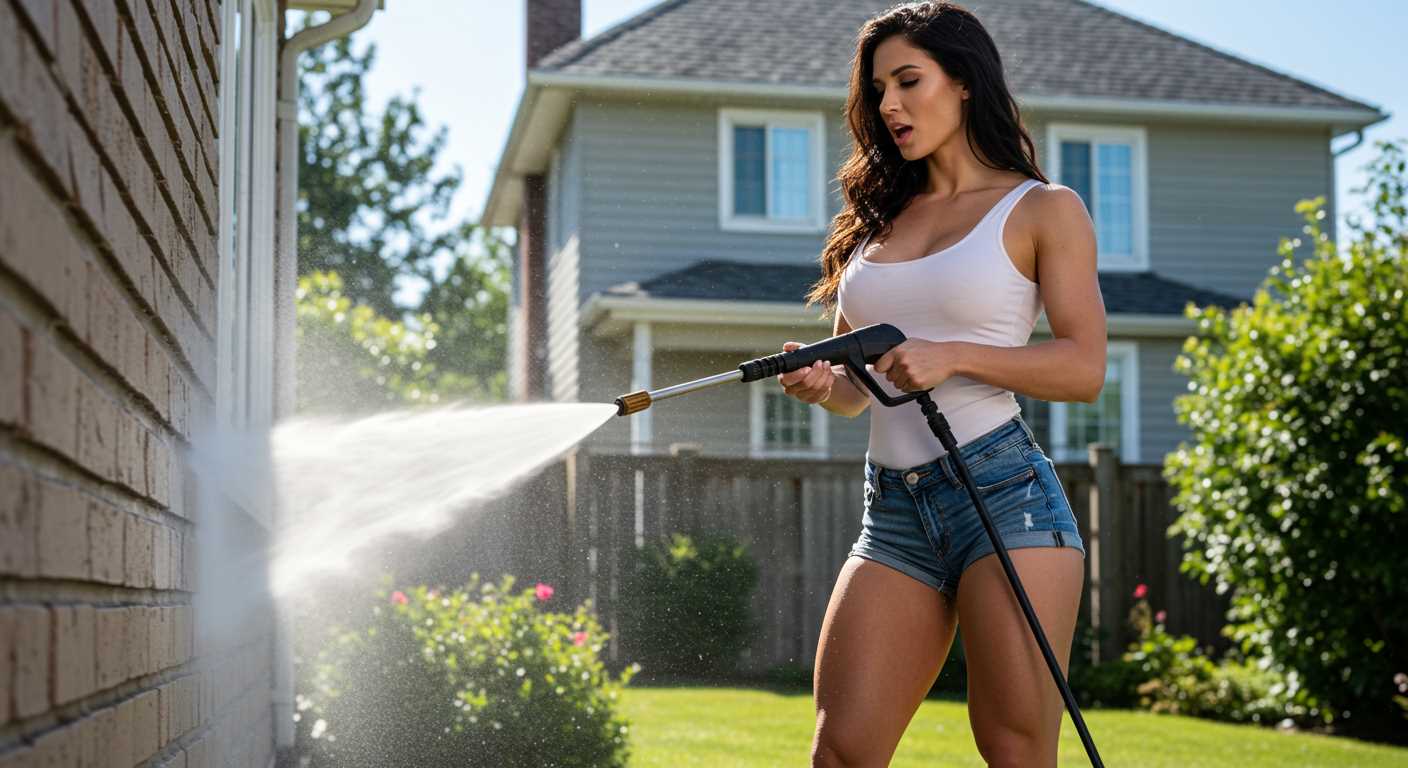
For optimal cleaning of hard surfaces, selecting an appliance with a pressure rating between 2500 to 3000 PSI is ideal. This range provides sufficient force without risking damage to the material.
Flow rate, measured in gallons per minute (GPM), is just as critical. Aim for at least 2.5 GPM. Higher flow rates enhance coverage and improve efficiency, allowing for faster cleaning.
Opt for a model equipped with interchangeable nozzles. A 15-degree nozzle is preferable for stubborn grime, while a wider 25-degree nozzle works well for general washing. This versatility allows for effective tackling of different surface types.
If frequent mobility is required, consider a lightweight variant. Features like integrated wheels and an ergonomic handle will significantly ease transportation, especially for larger areas.
Ensure the appliance has a reliable motor. Electric models are suitable for smaller jobs, while gas-powered units offer more power for extensive tasks. The choice depends on the scale of your needs.
Additionally, check for compatibility with detergents. A unit that accepts cleaning agents can enhance dirt removal, especially for oil stains or mildew.
Finally, read reviews and seek recommendations based on personal experience. Community feedback offers invaluable insights into the performance and durability of various brands.
Preparing the surface before high-pressure cleaning
First, remove any loose debris, such as leaves, dirt or gravel, from the area. A broom or blower will make this task easier, ensuring optimal results during the washing process.
Next, address any major stains or spills. Apply a suitable cleaner to oil spots or grease, allowing it to sit for the recommended time. This pre-treatment can significantly improve the outcomes when you proceed with high-pressure equipment.
After applying cleaners, thoroughly rinse the treatment area with water to prevent chemical residues from interfering with the washing. This step is particularly important if you opted for a more aggressive cleaning solution.
Inspect the surface for larger cracks or damage. Repairing these areas beforehand will prevent water from infiltrating and causing further deterioration. Use a concrete patching compound suitable for the surface type.
Lastly, mark any nearby plants or delicate features with protective coverings, such as drop cloths or plastic sheeting. This precaution safeguards them from potential damage during the operation.
Selecting the Appropriate Cleaning Solution for Concrete
Opt for a solution specifically formulated for tough surfaces, such as those designed for masonry or industrial-grade materials. Concentrated formulas penetrate deeply, breaking down grime and stains effectively. Look for biodegradable options to reduce environmental impact while ensuring strong cleaning power.
Types of Cleaning Agents
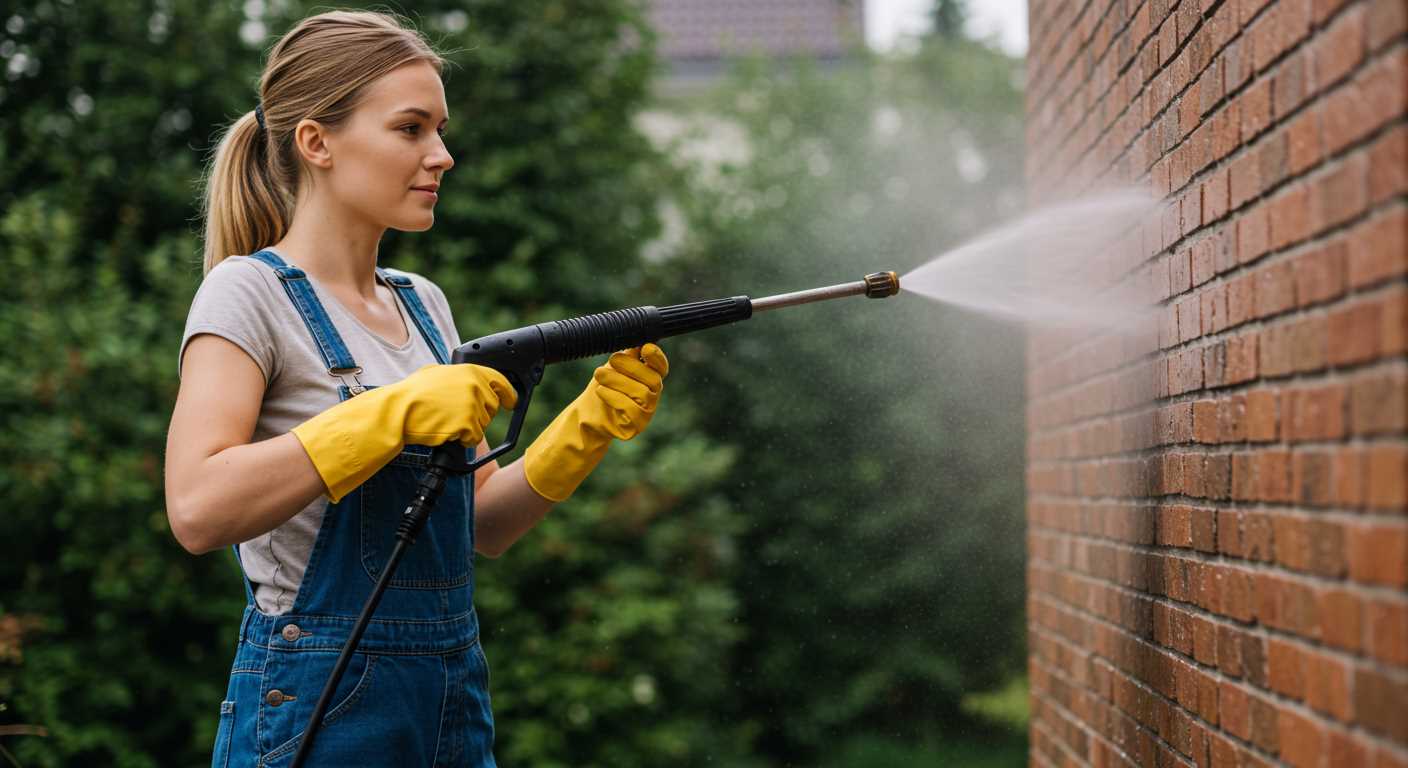
Bleach can be useful for mould and mildew; however, it may harm surrounding flora, so exercise caution. Alternatively, oxygen bleach products offer a safer choice without compromising on efficacy. Aside from that, alkali solutions work well for oil stains, while acidic solutions can address rust or mineral deposits.
Application Tips
Dilute concentrated solutions according to manufacturer guidelines to avoid surface damage. Apply using a sprayer or a brush for intricate areas before rinsing. Always conduct a patch test in an inconspicuous area to ensure the selected formula does not adversely affect the surface. Prioritise safety by wearing gloves and goggles during application.
Adjusting Pressure Settings for Different Concrete Stains
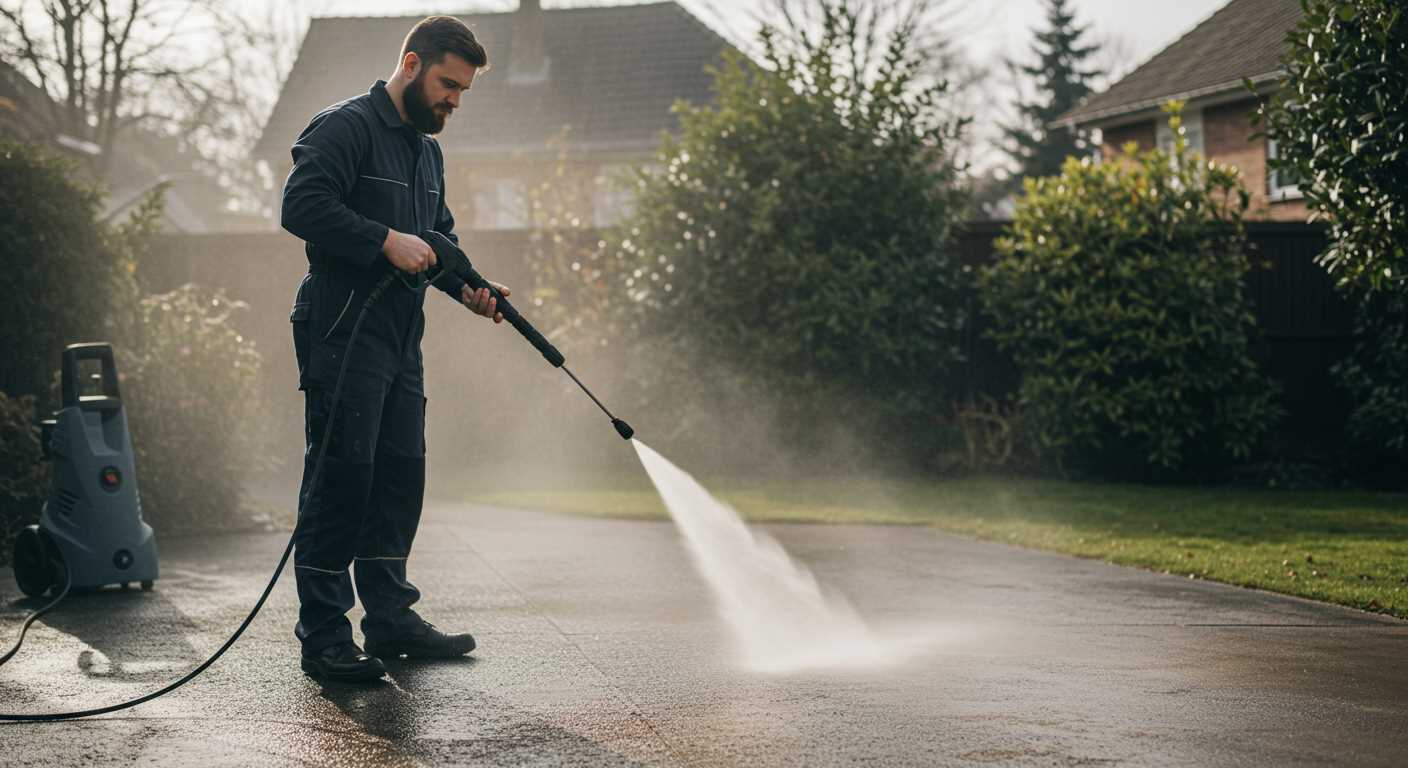
For stubborn marks, increase the pressure to around 3000 PSI. This level efficiently removes oil and grease effectively without damaging the surface. Start from a distance of about 12 inches, gradually moving closer while observing the results.
For organic stains like algae or moss, a moderate setting of 1500 to 2000 PSI is best. This range effectively eliminates biological matter without causing erosion. Keep the nozzle at a consistent distance of 18 to 24 inches to prevent surface damage.
Rust and mineral deposits require a specific approach. A higher pressure of 2500 to 3000 PSI can be applied, but ensure to use a surface cleaner attachment for even coverage. Test a small area first to monitor how the surface responds.
When dealing with paint or sealant, lower settings around 1000 to 1500 PSI should be used to avoid peeling the substrate. Move slowly and work in sections, allowing the cleaner to penetrate any stubborn spots.
Always advise testing an inconspicuous area before committing to any pressure setting on the main surface. Adjustments can be made based on results to ensure optimal cleaning while preserving the integrity of the material.
Techniques for manoeuvring the pressure washer properly
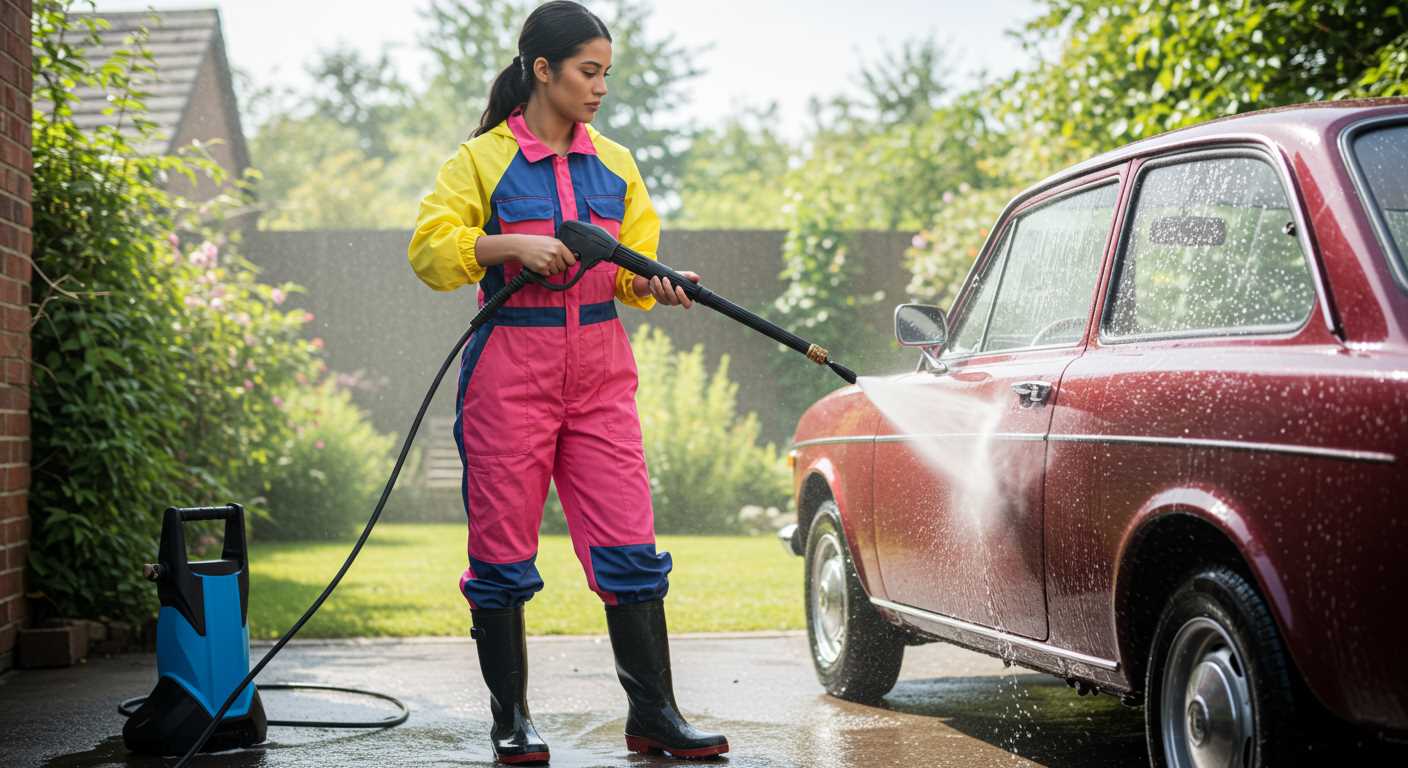
Maintain a comfortable stance, positioning your feet shoulder-width apart for stability. Grip the handle firmly while ensuring your upper body remains relaxed to avoid fatigue.
The angle of attack is crucial. For optimal results, tilt the nozzle at approximately 45 degrees. This provides better coverage and reduces the risk of damage to the surface.
Employ a steady sweeping motion. Begin at one edge and move horizontally across the area, overlapping each pass by about 6 inches. This technique ensures consistent results and prevents streaking.
Adjust your distance from the surface. Typically, keeping the nozzle 12 to 18 inches away from the ground offers the best balance between power and control. Experiment slightly to find the distance that works best for stubborn stains.
Practice controlling the trigger. Instead of holding it down continuously, consider pulsing the trigger to manage the water flow efficiently. This practice can enhance your precision and reduce excessive wear on both the equipment and the surface.
| Technique | Description |
|---|---|
| Stable stance | Feet shoulder-width apart for better control. |
| Angle of attack | Tilt nozzle at 45 degrees for optimal coverage. |
| Sweeping motion | Move horizontally, overlapping passes for consistency. |
| Distance control | Maintain 12-18 inches from surface for balance. |
| Trigger management | Pulse the trigger instead of holding continuously. |
Finally, practice with smaller areas before tackling larger sections. Familiarity with the equipment and control techniques will significantly enhance your overall performance.
Post-cleaning maintenance tips for concrete surfaces
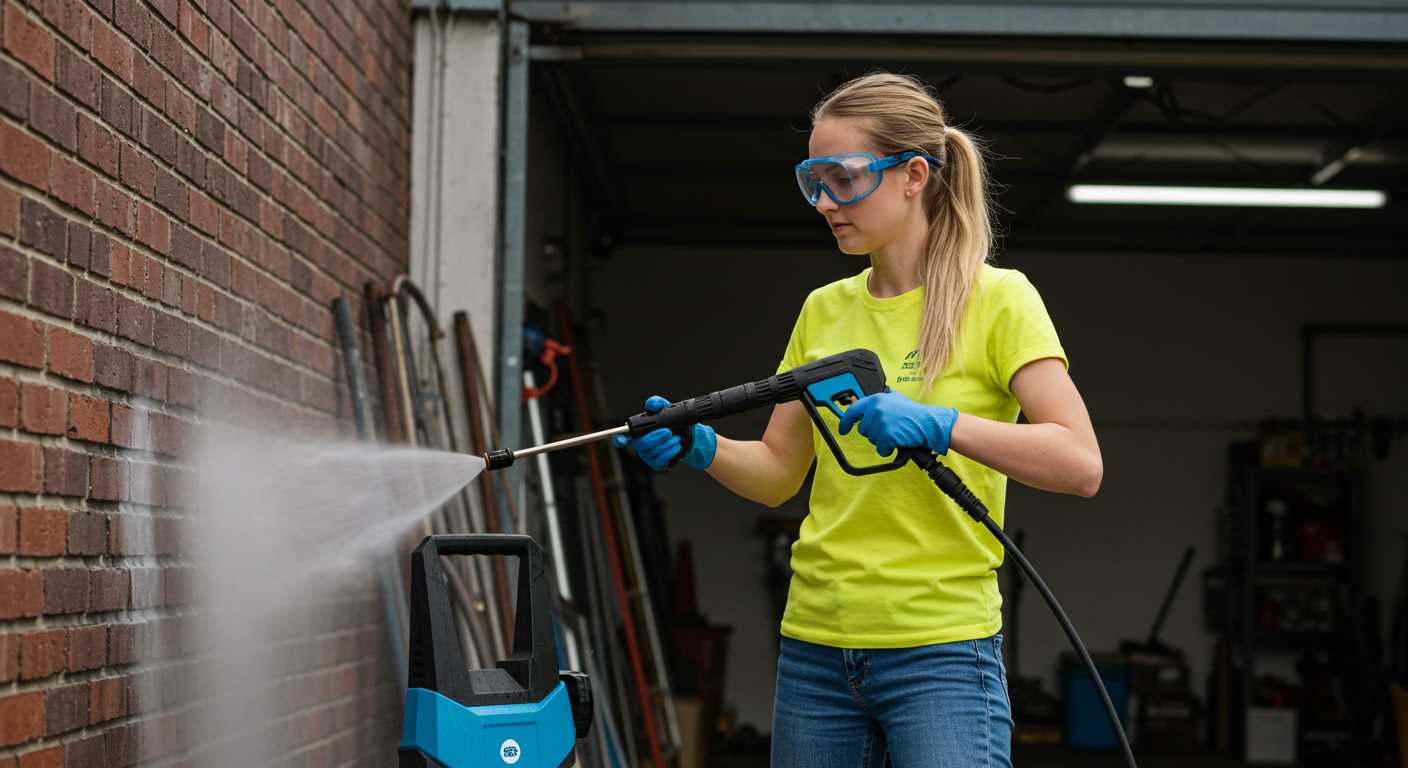
To preserve and enhance the longevity of your treated areas, follow these simple yet effective maintenance strategies:
- Ensure proper drying: Allow the surfaces to dry completely after washing before applying any protective treatments. This prevents trapping moisture and encourages better adhesion.
- Seal the surface: Consider applying a sealant once the load-bearing areas are dry. This helps protect against stains, moisture ingress, and wear.
- Regular sweeping: Maintain a routine of sweeping away debris and dirt, reducing the risk of stains and surface abrasion.
- Immediate stain removal: Address any spills promptly. Oil, rust, or other substances can cause lasting damage if not treated quickly.
- Inspect for damage: Regularly check for cracks or chips. Repairing these issues early can prevent more extensive damage.
- Monitor for algae and mould: If you notice growth, treat affected areas with appropriate treatment solutions to prevent recurrence.
By following these steps, you can ensure that your surfaces remain in optimal condition for years to come, enhancing their aesthetic appeal and structural integrity.









